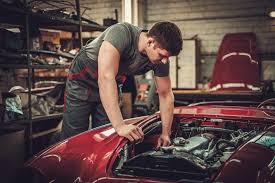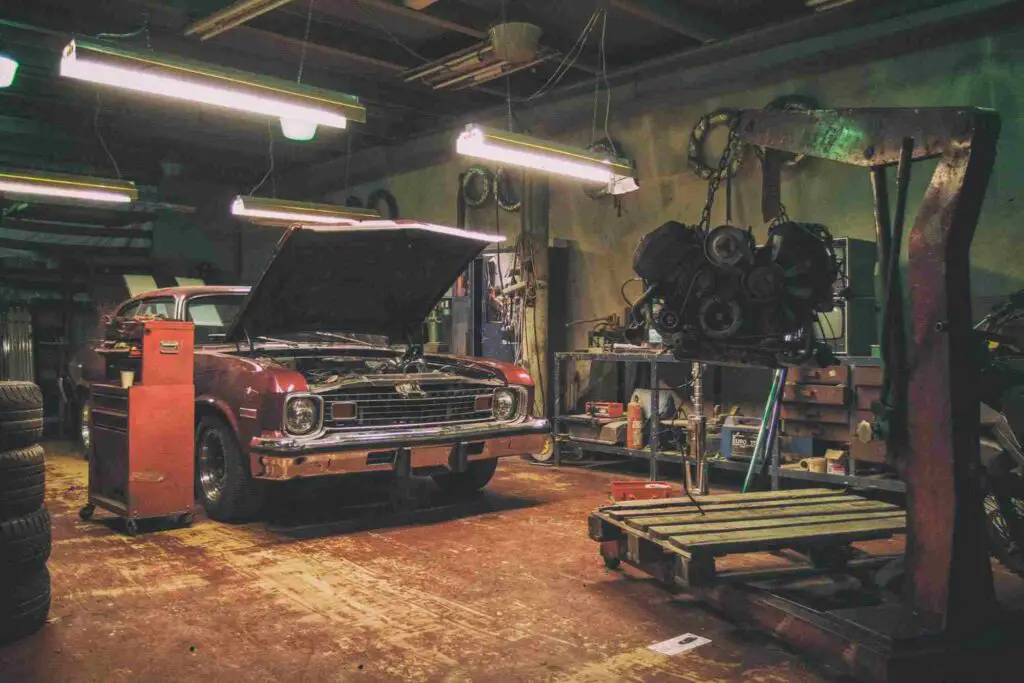Introduction: Why Classic Auto Repair
Classic Auto Repair There’s something enchanted almost a classic car-the scent of matured calfskin, the way the motor thunders, the nostalgic bends of the chassis. They’re not fair vehicles; they’re rolling time capsules. But keeping these wonders running? That’s where the genuine enterprise starts.
Classic auto repair isn’t fair a hobby-it’s a energy venture. Whether you’re tweaking in your carport or cruising on a Sunday drive, each jolt and clean includes to the story of your car. So, in the event that you’ve got a delicate spot for vintage wheels, adhere around. This guide’s for you.
What Checks as a Classic Car?
Collectible vs. Classic vs. Vintage
Let’s clear the discuss: “classic,” “vintage,” and “antique” aren’t conversely. Here’s a deceive sheet:
Collectible: Ordinarily built some time recently 1925.
Vintage: For the most part alludes to cars made between 1919 and 1930.
Classic: Most agree it’s any car 20–40 years old that holds historical interest.
It’s not just age—it’s attitude. A 1987 Buick GNX? Classic. A 2010 Corolla? Just old.
Popular Classic Models That Never Go Out of Style
You’ll see these legends at every car show:
Ford Mustang (’65–’73)
Chevy Camaro (’67–’69)
VW Beetle (any pre-’80)
Porsche 911 (air-cooled era)
They’ve got soul—and their own cult following.
Challenges of Owning a Classic Car
Parts Scarcity
Finding a carburetor for a ’68 Dodge Charger isn’t like picking up a spark plug at AutoZone. You’ll often dig through forums, call junkyards, or wait weeks for specialty orders.
Technical Know-How Required
Modern cars are plug-and-play. Classics? Not so much. You’ve got to understand timing, manual chokes, and maybe even tune a carb by ear. (Yep, it’s as cool as it sounds.)
Storage and Weathering Issues
Leaving a classic outside? That’s borderline criminal. Moisture kills chrome. Sunlight fades paint. Invest in a cover or, better yet, a garage with climate control.
The Basics of Classic Auto Repair
Engine Overhauls
Old engines love to leak, wheeze, and sometimes just quit. Full rebuilds often include:
Replacing pistons, rings, and bearings
Regrinding the crankshaft
Cleaning sludge from the oil pan
Brake System Refits
Drum brakes might be original, but they’re outdated. Many enthusiasts swap in disc brakes—for safety, not just performance.
Suspension and Steering Tuning
Loose steering and worn shocks are common. Replacing bushings, ball joints, and adding modern sway bars can make your ride feel less like a boat.
Where to Find Classic Car Parts
Online Marketplaces
eBay Motors, RockAuto, and Classic Industries are goldmines. Just triple-check part numbers—returns can be a hassle.
Salvage Yards and Swap Meets
Got time to dig? These are treasure hunts for rare parts. Pro tip: always bring cash and a flashlight.
Custom Fabrication Shops
If you can’t find it, make it. Machine shops can replicate brackets, trim, or even custom-fit exhaust systems.
DIY vs. Professional Repair: What’s Right for You?
Tools and Skills for the DIY Enthusiast
At minimum, you’ll need:
Jack stands
Torque wrench
Service manual (like a Haynes or Chilton)
Bonus points for a lift, timing light, and multimeter.
When to Call in a Specialist
Rebuilding a transmission? Sandblasting a frame? Sometimes it’s cheaper (and smarter) to hire a pro with the tools and know-how.
Preserving Originality vs. Upgrading
Matching Numbers and OEM Parts
Collectors drool over “matching numbers”—when the engine, transmission, and VIN all match factory specs. If resale value is your goal, keep it original.
Restomods: Modern Comfort in a Retro Shell
Want Bluetooth, AC, and fuel injection in your ’70s ride? Restomods blend old-school looks with modern performance. It’s like giving your grandpa a smart watch.
Top Classic Car Repair Mistakes to Avoid
Painting before bodywork is fully done
Mixing old and new electrical components
Skipping rust treatment (it always comes back)
Over-tightening bolts (you’ll strip ‘em)
Ignoring safety upgrades
Budgeting Your Restoration Project
Hidden Costs to Watch Out For
That $5k project car? Add another $10k for paint, parts, and labor. And don’t forget:
Towing
Tools
Registration fees
Tips for Smart Spending
Buy a car that already runs
Focus on one system at a time (engine, then brakes, then interior)
Use forums to find deals and advice
Classic Car Repair Shops: What to Look For
Certifications and Experience
Ask about:
ASE-certified mechanics
Years specializing in classic or vintage cars
Restoration projects completed
Customer Reviews and Community Reputation
Word-of-mouth means everything in the classic car world. Join local Facebook groups or visit car shows to get real recommendations.
Keeping Your Classic Roadworthy Year-Round
Seasonal Maintenance Checklist
Spring: Fluids, tire pressure, battery charge
Summer: Coolant level, fan belts, AC (if you have it)
Fall: Oil change, fuel stabilizer, tire tread
Winter: Battery tender, fuel treatment, car cover

Fuel, Fluids, and Filters
Old engines need love. That means:
Ethanol-free fuel
Zinc-rich oil
Fresh filters every season
Classic Car Insurance and Legal Considerations
Don’t just use your daily driver’s policy. Look into:
Agreed value coverage
Limited-use policies
Mileage caps
Also, check your state’s requirements—some classics are exempt from emissions tests.
Conclusion: A Labor of Love That Pays Off
Classic auto repair is untidy, time-consuming, and some of the time frustrating-but it’s too profoundly fulfilling. Each turn of the torque may be a step toward protecting a bit of history.And nothing compares to the pride of driving a machine you brought back to life with your own two hands.
So roll up those sleeves, cue the classic rock, and get wrenching. Your ride deserves it.
FAQs
1. What’s the contrast between a reclamation and a restomod?
A reclamation brings a car back to its unique condition utilizing period-correct parts, whereas a restomod overhauls it with advanced tech beneath a vintage body.
2. Is it cheaper to reestablish or purchase a completely reestablished classic car?
Buying restored is usually cheaper in the long run—but where’s the fun in that?
3. Can I use regular gas in my classic car?
Not always. Many older engines prefer leaded or ethanol-free fuel. Use additives or tune your engine accordingly.
4. How often should I start my classic car if it’s in storage?
About once every two weeks.Let it run long sufficient to warm up and circulate liquids.
5. What’s perfect way”>the most perfect way to anticipate rust on a classic car?
Keep it dry, waxed, and put away in a humidity-controlled carport.Rust prevention sprays help, too.

